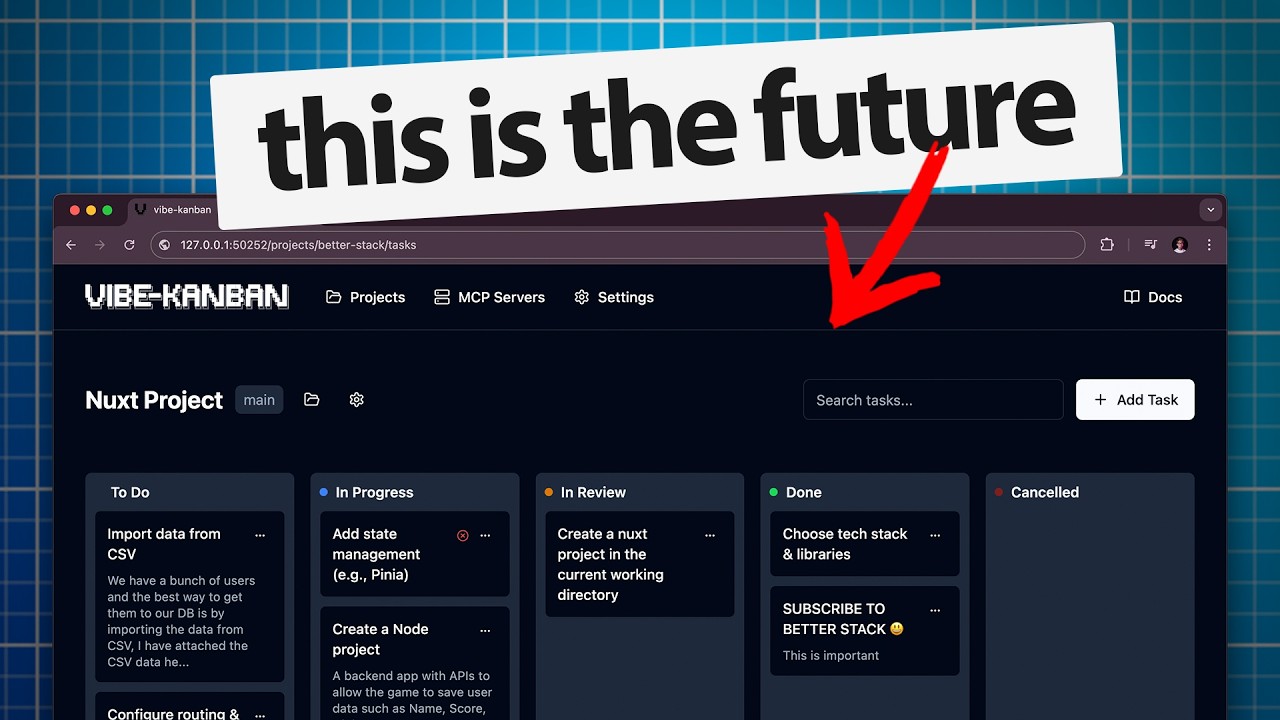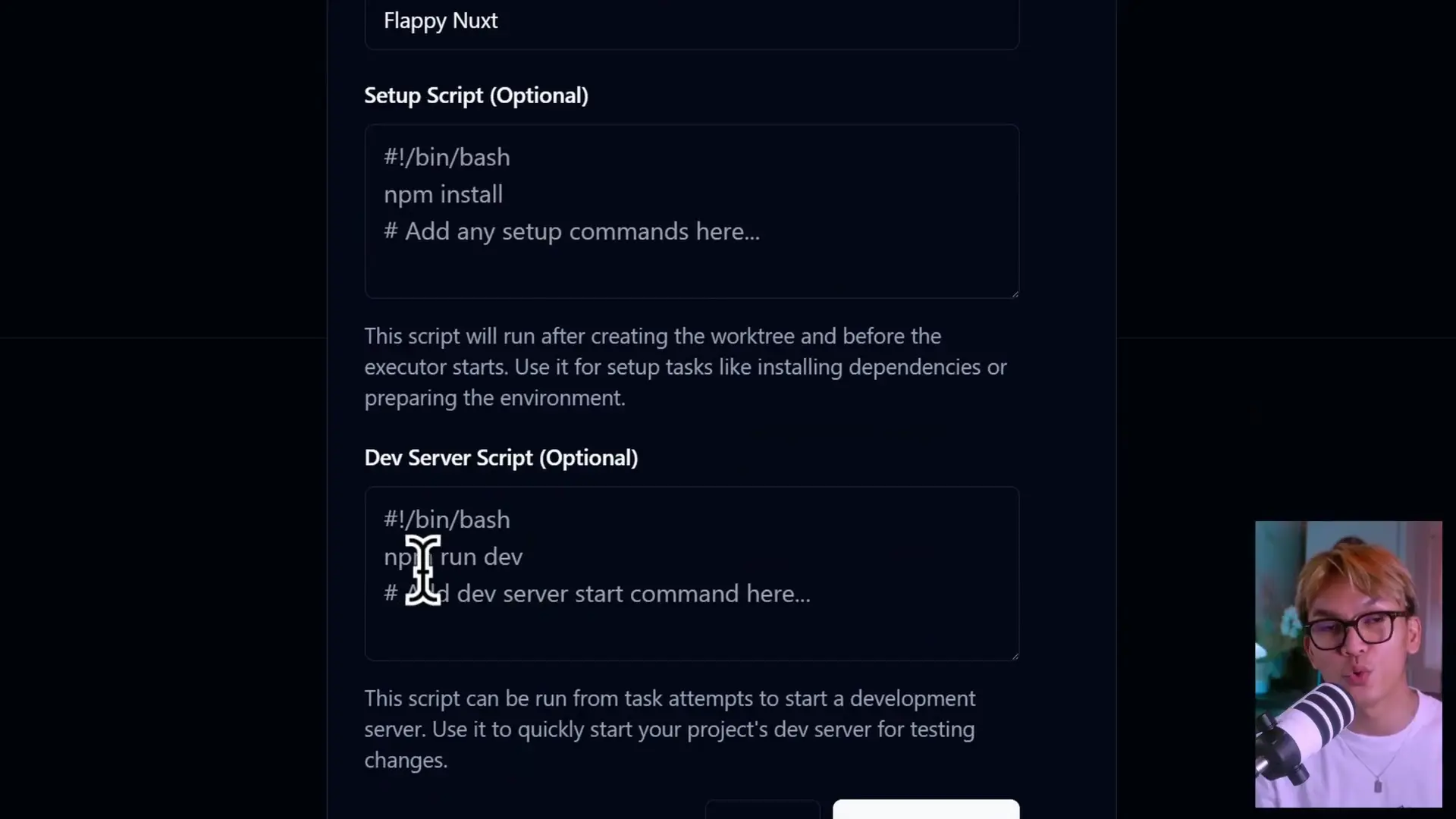
Kanban boards have long been a staple for development teams to track work progress, but what if these boards could do more than just visualize tasks? Enter Vibe Kanban, an innovative open-source platform that transforms traditional kanban boards by integrating AI agents capable of executing tasks directly within your workflow.
What is Vibe Kanban?
Vibe Kanban is a free, open-source AI platform that allows developers to write tasks and have AI agents work on them directly from a kanban-style interface. It represents a significant advancement in development automation, enabling parallel task execution by AI while maintaining the familiar kanban structure of to-do, in progress, review, done, and cancelled columns.
The platform integrates with your GitHub account, allowing AI agents to create branches, generate pull requests, and perform other version control operations. This tight integration creates a seamless development experience where routine tasks can be delegated to AI, freeing developers to focus on more complex challenges.
Getting Started with Vibe Kanban
Setting up Vibe Kanban is straightforward. After installing the application with a simple NPX command, you'll need to configure a few essential components:
- Execute 'npx vibe-kanban' to start the application
- Select your preferred coding agent (options include Echo, Cloud Code, AMP, Gemini, and Open Code)
- Choose your code editor (VS Code is a popular option)
- Connect your GitHub account to enable repository interactions
During setup, you'll receive a warning that AI agents will have full access to your computer, which is necessary for them to perform coding tasks. This level of access means you should use the application in environments where security isn't a concern.
Key Features of Vibe Kanban
- Parallel task execution by multiple AI agents
- Agent-specific task assignment based on strengths (coding vs. documentation)
- GitHub integration for repository creation and management
- Customizable setup and development scripts
- Visual progress tracking through traditional kanban columns
- Detailed task review with code diffs

How AI Agents Work in Vibe Kanban
The workflow in Vibe Kanban mirrors traditional development processes but with AI handling the execution. Here's how it typically works:
- Create a new task with detailed requirements (e.g., "Create an NX project with a landing page and game page using Tailwind CSS")
- Assign the task to an appropriate AI agent based on the requirements
- Start the task, moving it to the "In Progress" column
- The AI agent breaks down the task into subtasks and begins working
- Review the completed work, including code diffs showing what was created or modified
- Merge the changes if satisfied or request revisions
Each task can be assigned to different AI agents based on their capabilities, allowing you to leverage the strengths of various AI models. For instance, some agents excel at coding while others might be better suited for documentation or basic setup tasks.
Real-World Example: Building a Project with Vibe Kanban
To demonstrate Vibe Kanban's capabilities, let's look at a practical example where AI agents were tasked with creating a new project with specific requirements:
- Task 1: Create a GitHub repository for the project
- Task 2: Create an NX project with two pages - a landing page and a Flappy Bird game page using Tailwind CSS
Both tasks were executed in parallel by different AI agents. The GitHub repository creation was completed quickly, while the NX project development took slightly longer but resulted in a fully functional application with the requested features.
The AI agent for the NX project properly implemented Tailwind CSS, created the required pages, and even developed a playable Flappy Bird game. After the agent completed its work, the project could be immediately tested by installing the modules and running the local server.
# After the AI agent completes the task
npm install
npm run devBenefits of AI-Powered Kanban Automation
Integrating AI agents into kanban workflows offers several advantages for development teams and businesses:
- Increased productivity through parallel task execution
- Reduced time spent on repetitive coding tasks
- Standardized implementation of best practices
- Enhanced workflow visibility and progress tracking
- Lower development costs through automation
- Faster prototyping and proof-of-concept development
For businesses looking to optimize their development processes, AI in kanban automation represents a significant opportunity to streamline workflows and reduce time-to-market for new features and products.

Current Limitations and Challenges
While Vibe Kanban offers impressive capabilities, it's worth noting some current limitations as it's still an evolving open-source project:
- Occasional UI issues, such as non-functional "Open IDE" buttons
- Platform-specific bugs (e.g., merge button working on Windows but not on Mac)
- Disabled dev button in some scenarios
- Security considerations due to AI agents having full system access
As an open-source project, Vibe Kanban welcomes community contributions to address these issues and enhance the platform's capabilities. The project's ongoing development promises to resolve these limitations over time.
Implementing Vibe Kanban in Your Development Workflow
To integrate Vibe Kanban into your existing development processes, consider these implementation steps:
- Start with small, well-defined tasks to familiarize yourself with the AI agents' capabilities
- Gradually increase task complexity as you gain confidence in the system
- Establish clear guidelines for task descriptions to ensure AI agents understand requirements
- Implement a review process for AI-generated code before merging
- Document successful patterns and task templates for future use
For QA teams, Vibe Kanban offers opportunities to automate test case generation and basic testing scenarios, freeing up human testers to focus on more complex edge cases and user experience evaluation.

The Future of AI in Development Workflows
Vibe Kanban represents an early glimpse into how AI will transform development workflows. As AI capabilities continue to advance, we can expect even deeper integration of intelligent agents into the software development lifecycle.
Future iterations may include more specialized AI agents for specific programming languages or frameworks, enhanced collaboration between human developers and AI assistants, and more sophisticated project management capabilities that leverage AI for planning and resource allocation.
Conclusion
Vibe Kanban offers a compelling vision of how AI can enhance traditional development workflows by directly integrating intelligent agents into familiar kanban boards. As a free, open-source tool, it provides an accessible entry point for teams looking to experiment with AI automation in their development processes.
While still evolving and addressing some limitations, the platform demonstrates significant potential to accelerate development cycles, reduce repetitive coding tasks, and enable teams to focus on higher-value work. For organizations exploring AI tools for business efficiency, Vibe Kanban represents a practical implementation that delivers immediate value while pointing toward the future of AI-augmented development.
Let's Watch!
Revolutionize Your Workflow: How AI Agents on Kanban Boards Automate Development Tasks
Ready to enhance your neural network?
Access our quantum knowledge cores and upgrade your programming abilities.
Initialize Training Sequence